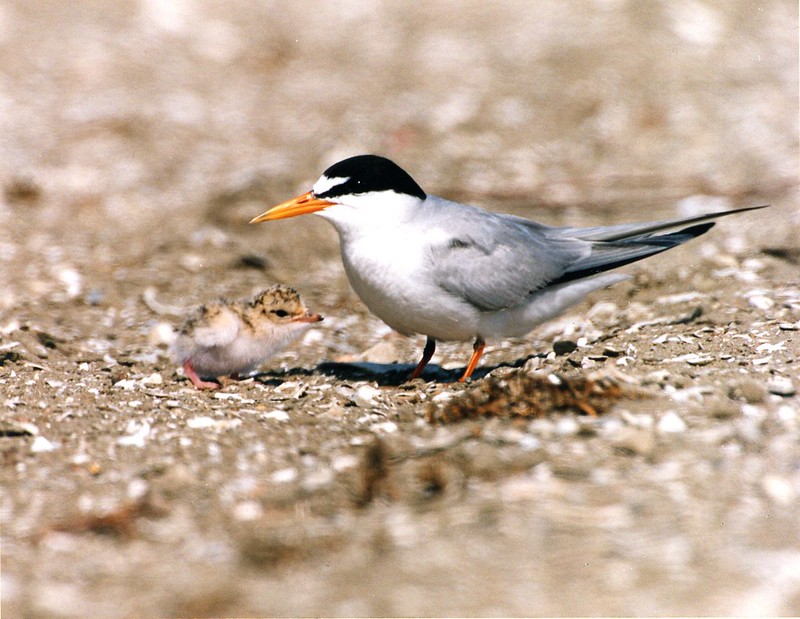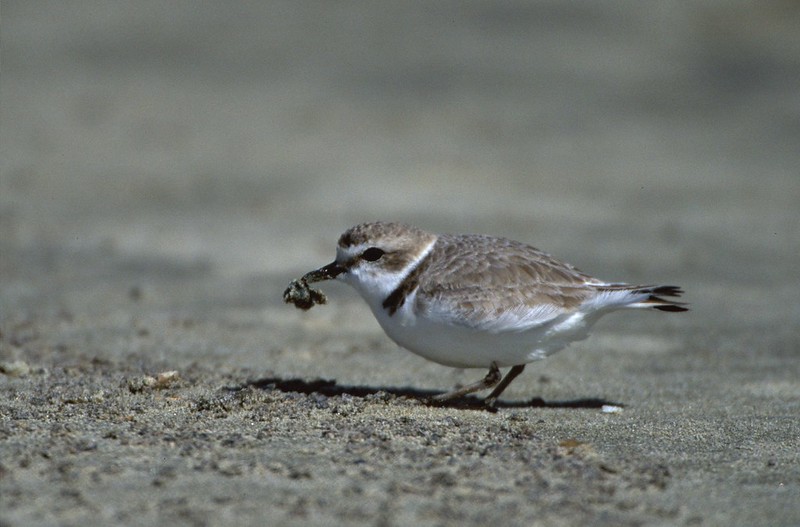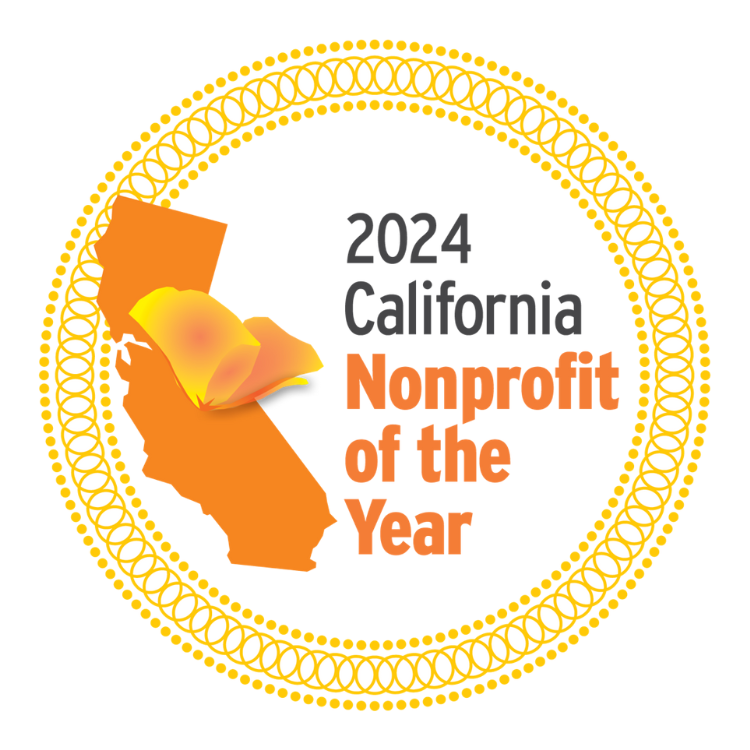Cover Photo: Western Snowy Plover chick
The Santa Ana River Mouth is home to two species of bird that are protected by the Endangered Species Act: the California Least Tern (Sterna antillarum browni) and the Western Snowy Plover (Charadrius alexandrinus nivosus). While each of these birds has different life cycles, they’ve both chosen the Santa Ana River Mouth to raise their young alongside one another.

California Least Terns use the Santa Ana River Mouth to rear their young and nest in the California Least Tern Preserve managed by California State Parks. They only inhabit the area seasonally, typically from mid-May to mid-August.
The shallow river mouth provides an area for adults to hunt for their young, who rely heavily on their parents in their first weeks of life. The chicks learn to dive for fish in this area and can be seen “loafing” on the dry sand as fledglings, resting in between flying and fishing lessons.
These 10” long seabirds spend their winters in unknown areas of the Pacific Ocean, gaining weight in preparation for the summer nesting season in California.
In 1970 there were only 256 breeding pairs in the state. Through decades of hard work in monitoring and protection, there are approximately 4,095 pairs throughout 29 nesting sites along the California coast as of 2017.

Western Snowy Plovers are year-round Orange County residents that use our beaches to forage. They generally nest mid-March through mid-July, and while females typically lay 3-4 clutches (typically 2-3 eggs) throughout the nesting season, each male tends to raise one clutch alone. Within hours of hatching, chicks can be seen foraging with their parents. Having clear access to the wrack line where seaweed washes ashore is essential for them to feed on their natural prey.
While Western Snowy Plovers can be found between Washington and Mexico, the majority of them nest in California on sandy beaches. As of 2019, it’s estimated that there are only 2,217 adults along the West Coast, with half of them nesting between San Luis Obispo and San Diego counties. In Orange County, they have only been reported nesting on Bolsa Chica State Beach, Huntington State Beach, the Balboa Peninsula, and most recently at Trestles in Southern Orange County. They can be found wintering in smaller groups on all sandy Orange County beaches.

Both of these species have been present in the Santa Ana River mouth for tens of thousands of years, but their future is uncertain due to human activity. Their main barriers to success are sea level rise, ocean warming, coastal development, and predation (primarily by crows, rats, raccoons, coyotes, and cats), all of which are increasing due to human use and visitation.
In an area where these protected species are declining due to competition with humans for sandy beaches, we need to balance the needs of the animals with the wants of human visitors.
Helping these birds is a primary goal of the Santa Ana River Mouth Monitoring Project, as it comes down to human actions in the area. Disposing of our trash properly is one of the best things we can do to keep their predator populations in check, beyond keeping our pets indoors. However, at the Santa Ana River Mouth, one of the greatest threats to these birds is the presence of dogs.
These shorebirds have survived for centuries by responding to threats, such as approaching dogs, by fleeing and abandoning their nests and chicks. This stress can also potentially reduce the likelihood of them nesting at all the following year. The worst-case scenario is when these threatened bird species are caught and killed by dogs.
Please avoid taking your dogs to the Santa Ana River Mouth. Instead, visit the Huntington Dog Beach, any of our local dog parks in Orange County, or local beaches where dogs are permitted at certain times.
You can also join us in our outreach and survey efforts in the Santa Ana River Mouth area by emailing us at volunteer@coastkeeper.org.
Resources
https://ecos.fws.gov/docs/tess/species_nonpublish/2806.pdf
https://ecos.fws.gov/docs/tess/species_nonpublish/3520.pdf
https://en.wikipedia.org/wiki/California_least_tern
https://www.cdpr.ca.gov/docs/endspec/espdfs/ca_least_tern.pdf
https://www.biologicaldiversity.org/campaigns/esa_works/profile_pages/CaliforniaLeastTern.html
https://ca.audubon.org/westernsnowyplover/about-western-snowy-plover






